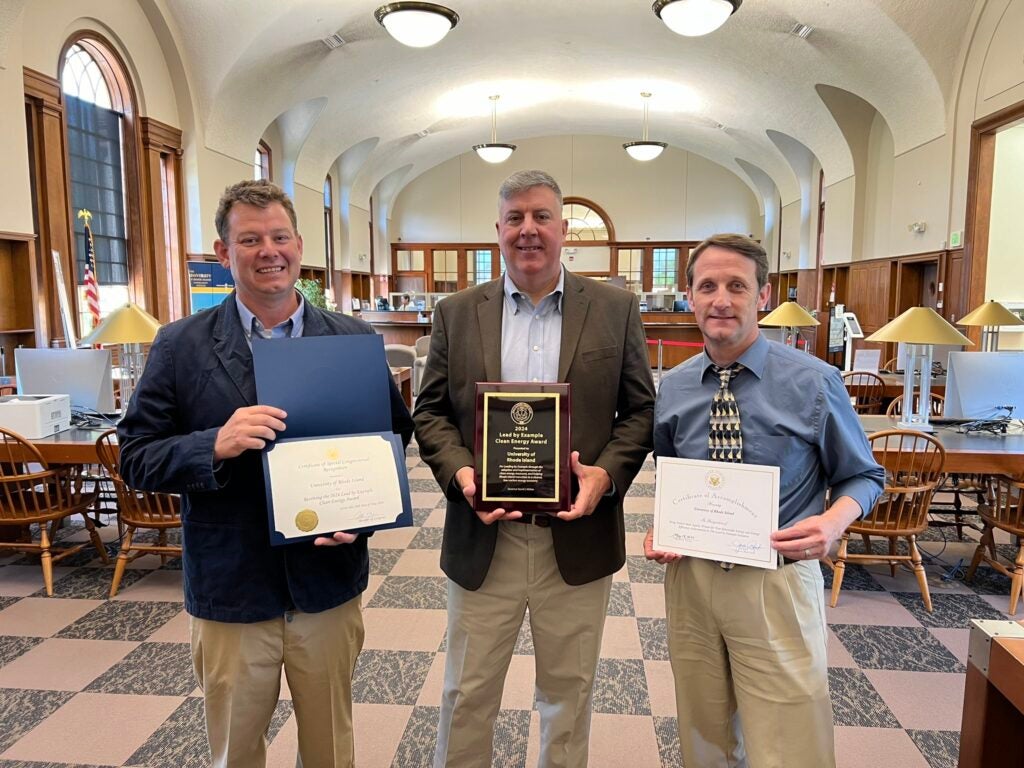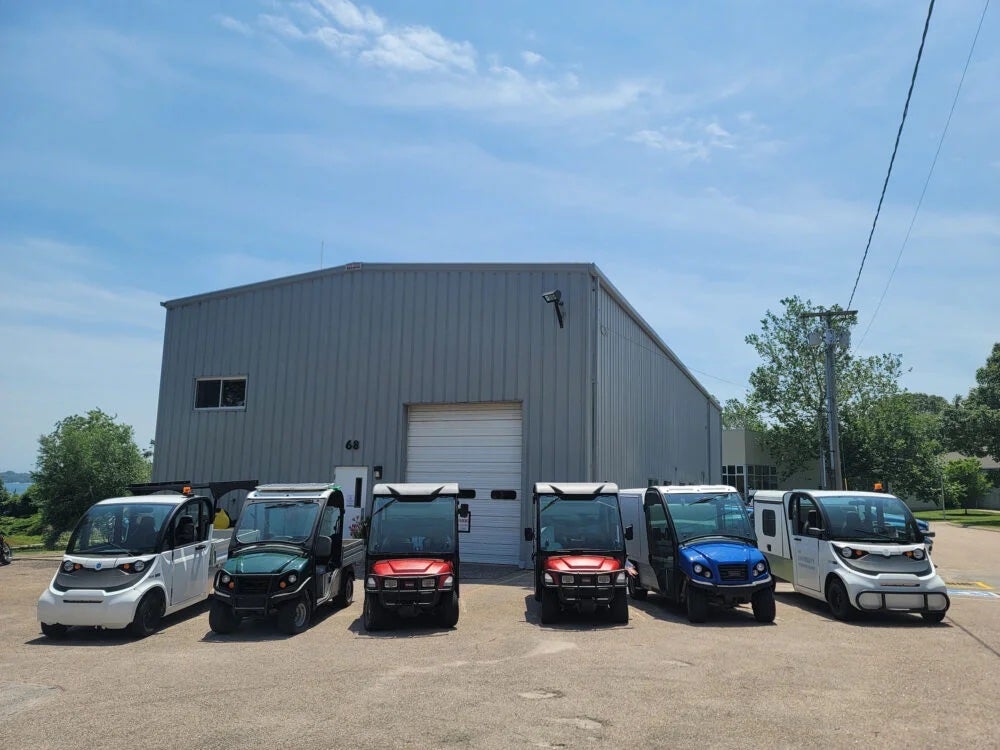Recognized for work powering local energy grid and producing energy-savvy graduates
July 16, 2024
The sunflowers and vegetable bounty at the Agronomy Farm at the University of Rhode Island provide clear evidence of the ample sun shining on that part of Kingston. For good reasons, a farm has been located at that part of campus since 1888.
Across the street, URI staff working in non-agricultural departments at the University looked at the sunshine in the area, too, but for different purposes — to create a solar energy-producing parking lot on campus, one of the largest in Rhode Island and the only of its kind at any college in the state.
The solar carport, created in partnership with Kearsarge Energy at the University’s Plains Road South commuter parking lot (#31), now provides power and features prominently in the University’s sustainability initiatives.
The University was recently recognized for its unique carport and other campus-wide efforts by Governor Dan McKee and the Rhode Island Office of Energy Resources at the seventh annual Lead by Example Energy Awards. The Lead by Example program encourages state agencies, cities and towns, and public schools across Rhode Island to work together to meet the state’s goal of achieving a net-zero emissions economy by 2050.

URI was recognized with other state entities, municipalities, and public schools for strides in renewable energy and energy efficiency achievements, including the carport, its long-running Energy Fellows program, now in its 17th year, as well as efficiency projects at its Narragansett Bay Campus.
Seth Pilotte (MESM ’20), URI NBC Construction Projects Manager at the Bay Campus, terms much of the prior infrastructure on campus “major energy hogs” and says that needed change-outs are making a difference.

Projects at the Bay Campus have reduced annual campus carbon emissions by 665 metric tons, equivalent to the annual gas consumption of 158 automobiles or the energy usage of 87 single family homes. Among them are the replacement of the Bay Campus’ entire maintenance vehicle automobile fleet with electric low speed vehicles (LSV). The campus also replaced high-consumption metal halide and fluorescent light fixtures across its buildings with LED lights and swapped old boilers for new higher-efficiency models.
Look up
Kenneth Burke ’93 ’10, associate director of capital projects, said URI’s Facilities Group took the governor’s mandate seriously and wanted to make changes that would create a big impact to help meet the state’s goal.
The solar carport at the base of campus was one of their biggest projects.
While the new lot provides a more attractive environment for visitors and fans of Rhody Softball, the carport’s impact extends beyond the diamond to the surrounding communities. According to Ryan Carrillo, director of planning and real estate development at URI, the solar canopy provides 1.8 million kilowatt hours of energy every year, the equivalent of 255 homes’ electrical use per year.

URI received a net present value payment based on what savings would have been realized over 25 years, totaling a one-time payment of $906,000, to help cover the cost of the parking lot project. The solar arrays also “offset” the emissions for the 308 vehicles that can be parked in the lot year-round.
Still, while URI is leading the way, in their haste to make their way to class, some students parking under the carport this past school year may not be aware of its added features.
Senior Sanah Feroz is vice president of the Student Senate and a URI commuter. As a regular user of the #31 commuter parking lot, she says she welcomed parking with shelter, especially on snowy and rainy days, with easy access to the Rhody Shuttle. She was glad to learn the new parking area also serves a larger purpose.
“I’m glad to learn that this nice parking shelter also serves long-term sustainability goals,” she says, “and is saving energy. Let’s get the word out! I think it’s great.”
Powering Rhode Island’s energy future
URI also received recognition at the Lead by Example ceremony for a program that is seeding the clean energy workforce of the future. The University’s Energy Fellows Program received the first “special honor” in its unique category to recognize its contributions to building the clean energy workforce in Rhode Island. (New mentors for the program are always welcome.)
Several Energy Fellows alumni now working in the industry joined program administrator Kate Venturini-Hardesty ’06 ’10 to accept the award.
Bryan Evans ’19, program manager at Rhode Island’s Green and Healthy Homes Initiative, was a 2018 Energy Fellow and says he was thrilled to see URI’s recognition.
Now working in the field, he calls his time as a URI Energy Fellow invaluable. Evans says the program let him take learning from the classroom and translate it into real-world solutions to further drive energy and business solutions.
“I credit URI for laying the foundation for my success in this field,” he says. “The hands-on experience and specialized education were an amazing opportunity for me to refine my skills and pursue what I love. I am proud to have been part of URI’s commitment to energy and sustainability and look forward to continuing to see URI lead by example.”
As Acting State Energy Commissioner for Rhode Island, Chris Kearns ’08 is glad to see his alma mater leading the way with these changes.
“The Office of Energy Resources has had a great working relationship with URI and the Energy Fellows Program for the last decade,” said Kearns. “At this year’s Lead by Example Awards, we recognized the valuable contributions of the program in providing students with professional development opportunities in energy. We also highlighted the energy improvement projects on campus, including one of the state’s first large solar carports. This partnership shows how we’re working together to drive innovation and sustainability in Rhode Island.”

